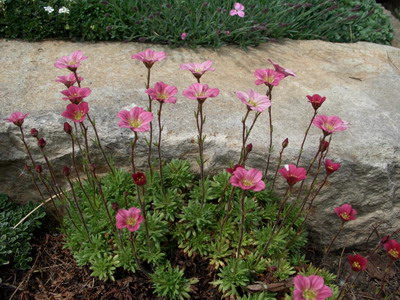Modern masters of landscape design very often use such a beautiful and unpretentious saxifrage flower to create their masterpieces. This perennial groundcover is sure to brighten up your garden or flowerbed without bringing any hassle at all. The saxifrage flower, planting and caring for which is quite simple, attracts the attention of flower growers with its unusual appearance.
It is distinguished by very beautiful rosettes of silver-green leaves, which are collected at the roots, and five-petalled flowers of various colors on tall stems, reaching 70 cm in length.

The saxifrage grows in a continuous carpet and pleases flower growers throughout the summer with its beautiful pink, white, blue, yellow and even red color.
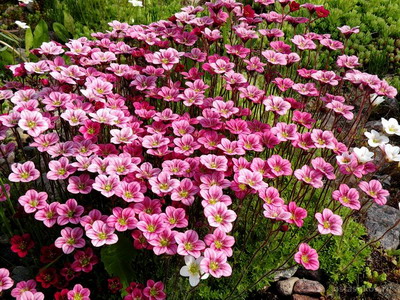
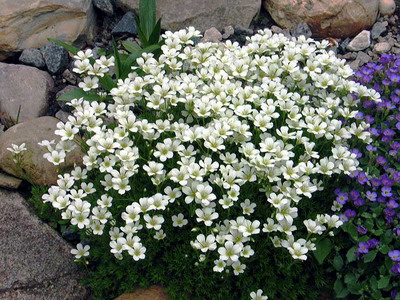
We plant saxifrage: popular plant species
You can plant a saxifrage in flower beds and flowerpots, this flower looks great growing on alpine hills , in rockeries and rock gardens. The flower feels good on rocky soil, as it naturally grows in cracks in rocks and cliffs. That is how it got its name.
The leaves of different varieties of this plant have a different shape, so planting a saxifrage in a flower bed allows you to create very beautiful compositions.
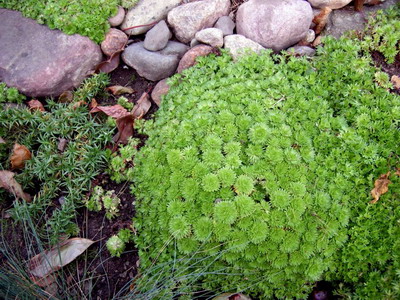
In our latitudes, the following popular types of saxifrage are most often planted:
Blutenteppih.

Flamingo.
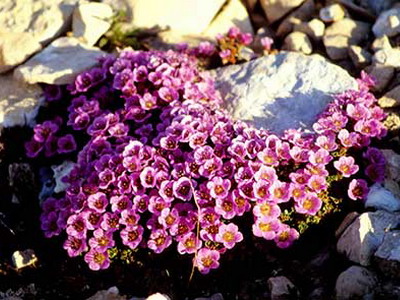
Purplemantel.
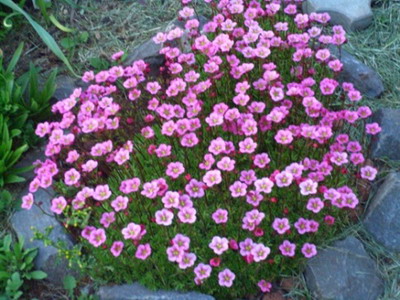
Arends.

Schneeteppih.

Most of all, flower growers like its qualities such as durability and compact size in this plant. In addition, the flower gives a lot of seeds, the planting of which in the next season allows you to quickly and very efficiently propagate it. How to plant a saxifrage seedling or in open ground? This process is quite simple, so after familiarizing yourself with its basic rules, even a novice florist can grow a beautiful flowering plant.
How to plant saxifrage seeds for seedlings?
Planting and caring for saxifrage seeds will only be successful if certain rules are followed. The first thing that will help ensure uniform and friendly seedlings is the choice of high-quality planting material, since most often saxifrage is planted in open ground in the form of grown seedlings grown in boxes at home.
The planting of strengthened and grown seedlings of saxifrage in open ground is carried out at the end of May or at the beginning of June.

These terms depend on the growth rate of seedlings and weather conditions. Planting flowers in the ground is carried out directly with peat pots, in which they grew after picking from a common box. The distance between planted plants should be at least 20 cm.
Planting a saxifrage and caring for it in the open field will not be difficult, since the flower is very unpretentious.
All that is required for the normal existence of this plant is sufficient, but not direct sunlight, light nutrient soil, regular and moderate watering, and the timely removal of faded flower stalks. The saxifrage prefers well-drained soil, as it does not tolerate stagnant moisture.
Reproduction of saxifrage by cuttings and dividing the bush
You can start propagating saxifrage by cuttings only after the flowering period of the plant is over.

Cutting is done as follows:
- long lateral stems of plants, called tendrils, are pressed with staples to the ground, making small holes in them;
- sprinkled with earth on top, while the soil must always be kept moist for better rooting of the shoots;
- in autumn, plants are mulched and sprinkled with leaves;
- in the spring, they determine which of the stems are rooted, separate them from the bush and transplant them to a new place.
Another common way to propagate this beautiful and unpretentious plant is to divide an adult bush into parts. This method is quite simple to perform and is applicable to any adult flowers with more than three rosettes.

The division is done as follows:
- after the flowering period, healthy bushes are selected and well watered;
- with the help of a sharp garden spatula or knife, additional rosettes and processes with roots and leaves are separated from the main outlet;
- the injured mother plant is sprinkled with earth from the side of the cut, and the separated sprouts are planted in the shade and throughout the summer the earth around them is regularly watered and loosened;
- after overwintering in a temporary place, the separated plants are transplanted to a permanent place in the spring.
Growing a saxifrage plant
Saxifrage bushes separated in this way require special care and cultivation, as they are more vulnerable than pre-rooted processes. Despite the fact that such plants already have roots, they require strength and time to take root.
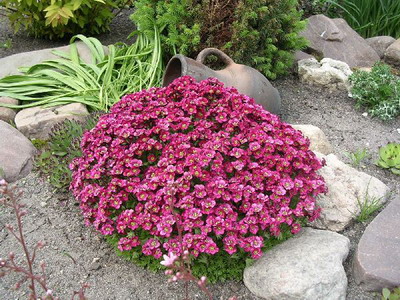
This unpretentious plant is little susceptible to disease and is practically not damaged by pests.
Therefore, both planting and caring for the saxifrage, the photo of which is given below, will not take much time:

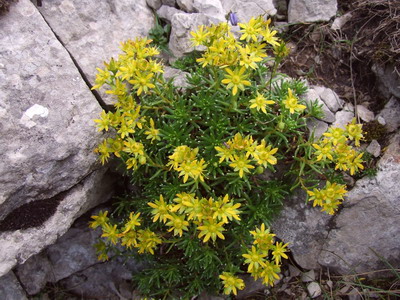
The only difficulty that flower growers have in the process of growing a flower is the loss of decorativeness due to overgrowth.
The thing is that overgrown plant stems eventually lose their leaves located close to the ground and the soil begins to shine through them. Therefore, caring for the saxifrage must necessarily include regular renewal of the bushes and their division using cuttings.
